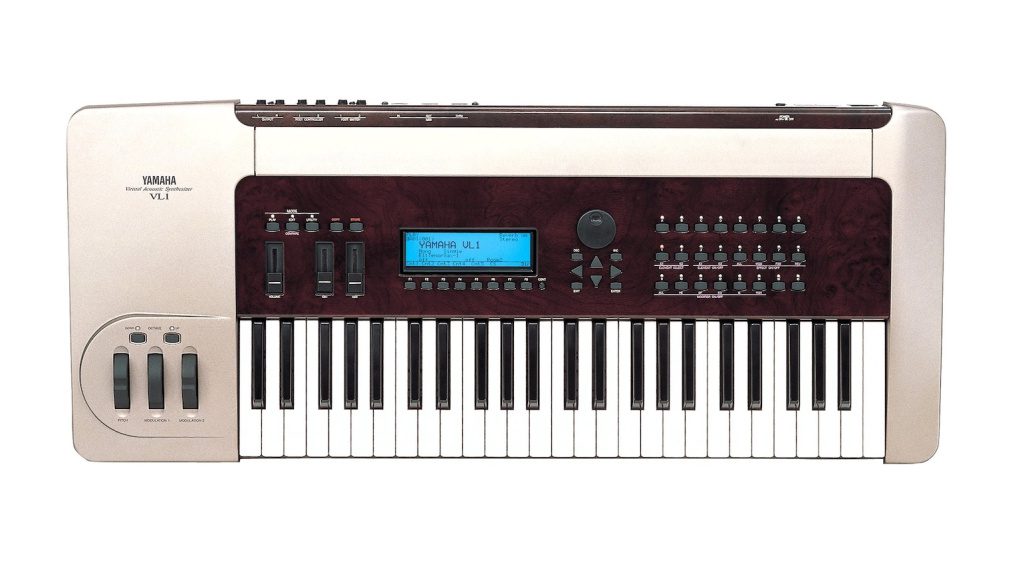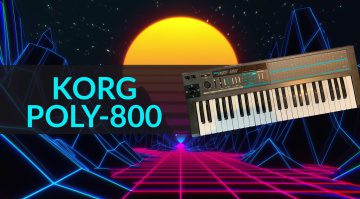7 Synths That Were Victims of Bad Timing
Synths that got the timing wrong from Roland, Casio, Ensoniq, and more.
Too early? Too late? Here are seven synths that were victims of bad timing.
Synths That Were Victims of Bad Timing
There are so many factors that go into the success of a synthesizer. Feature set. Playability. Affordability. And then there’s timing. Because of their complexity, some synths can take years to reach completion. What seems a slam dunk at the onset may end up yesterday’s news when it finally comes out because of shifting trends in technology and music production. Or, on the other hand, an instrument may just be ahead of the curve, with groundbreaking new technologies that people aren’t ready for upon debut.
With that in mind, here are seven synths that were victims of bad timing. Had they been released a few years earlier or later, they may have been the successes they deserved to be – and not just cult items that get synth nerds like myself excited.
Synths That Were Victims of Bad Timing: Crumar Spirit
The 1980s were not good years for monophonic synths, Sequential Pro-One and Roland SH-101 aside. The big hair decade was all about polys, whether analog or digital. No one had time for an instrument that could only play one note at a time, even if it was developed by Bob Moog.

The Spirit, a 1983 monosynth from Italian keyboard maker Crumar, had a lot going for it – and not just the famous Moog name association. Along with former Moog employees Jim Scott and Tom Rhea, Bob whipped up this wild synth ride for Crumar on a contract basis, imbuing it with all manner of synthesis glory, including two VCOs, a dual filter with SEM and Ladder stages, two separate signal paths and wacky unique Mod X and Shaper Y control sections.
Given its cult status, Crumar was wise enough to revive it last year in a limited run. I’m also hoping for an official (or even unofficial – Cherry Audio, are you listening?) software emulation.
- Crumar Spirit product page
Synths That Were Victims of Bad Timing: Oxford Synthesizer Company OSCar
Another ‘80s mono (duo?) that suffered from bad timing was the Oxford Synthesizer Company OSCar. Released in 1983 to baffled looks (it has one of the most unique front panel designs ever), it found some favor with adventurous musicians but ultimately failed because of affordable Japanese polys.
The OSCar was the brain child of Chris Huggett, who you may also know as the man behind the Electronic Dream Plant Wasp and later Novation triumphs like the BassStation and Summit. A pioneer of hybrid synthesis, Chris gave his OSCar (and other instruments too) digital oscillators and analog filters – two of them, actually. It was (and still is!) a bass monster and ended up in the hands of Stevie Wonder and Ultravox, to name a few.
Although Behringer is rumored to be working on a polyphonic OSCar, your best bet right now to get the Oxford Synthesizer sound is with GForce’s impOSCar3.


Synths That Were Victims of Bad Timing: Yamaha VL1
One of the rising stars of synthesis in the last few years has been physical modeling. Using math to replicate the sound of acoustic instruments, it offers a surprising amount of realism. Quite a few modern piano plugins are done with physical modeling and not samples, as you might think. It may seem like the cool new thing, but it’s actually pretty old.

Working from a license obtained from the same research group that birthed FM synthesis (Stanford University), Yamaha developed a physical modeling synthesizer, the VL1, way back in 1993. Focusing on solo instruments, the two-note polyphonic instrument was very expensive and also very hard to play, two big strikes against an instrument with a synthesis engine that no one really cared about anyway.
These days it’s much easier to get your hands on synths that do physical modeling, like the Expressive E Osmose and new Erica Synths Steampipe. And they’re much easier to play.
Physical modeling was an important step in synthesis in general, helping give birth to virtual analog, which would become massive just a few years later thanks to the Nord Lead. The VL1, however, remains a curious footnote, one of many of the synths that were victims of bad timing.




- Yamaha VL1 product page
Synths That Were Victims of Bad Timing: Syntauri AlphaSyntauri
In 2024, playing synthesizers that exist entirely as software is nothing special. But 44 years ago it was a very different story. That’s when Syntauri released AlphaSyntauri, an additive synthesizer that you played on an Apple IIe. It was absolutely ground-breaking, and also way, way too far ahead of its time.
In 1980, if you wanted a digital synthesizer you could get a New England Digital Corporation Synclavier or a Fairlight CMI. If you didn’t have the $40000 needed, you could plunk down a much more reasonable $1500 for a copy of AlphaSyntauri, assuming you already had the computer. With 16 digital oscillators and eight-voice polyphony, AlphaSyntauri could even do keyboard splits. Oh yes, the keyboard. It did come with one of them, either 49 or 61 keys. You could even get a MetaTrak sequencer program to make songs with it.
If you’re into additive synthesis or just curious what it sounds like, Audio Damage makes a great modern software version called Phosphor.

Synths That Were Victims of Bad Timing: Ensoniq Fizmo
These days, everyone wants a wavetable synth. Whether hardware or software, those scanning clusters of digital waveforms are the sound of the moment. Not so in 1998, when Ensoniq released one of its final instruments, the uniquely named (and colored) Fizmo, to general bafflement and disinterest.
Fizmo was utterly unique and extremely powerful, with 48-voice polyphony, four voices per preset each with two Transwave oscillators (Ensoniq’s unique take on the wavetable), filters, envelopes and effects. In keeping with the time, Ensoniq gave the Fizmo knobs for real-time control, although the small LCD screen made editing the rather complex patches difficult.
Ultimately, people didn’t really know what to do with Fizmo. Wavetable synthesis – never a runaway success – had by this time been completely supplanted by VA and grooveboxes. Even wavetable king Waldorf was moving away from them.
Fizmo’s sound didn’t help either, retro ‘80s with a focus on evolving pads and atmospheres. If this sounds rather contemporary, I’m right there with you. From the look to the sound, it’s extremely vaporwave and is just crying out for an emulation. The best you can do until that happens is Arturia’s SQ80 V. It doesn’t have Transwaves but it is based on an Ensoniq instrument.

Synths That Were Victims of Bad Timing: Roland JD-800
When speaking of synths that were victims of bad timing, one that often comes up is the Roland JD-800. Released in 1991, it was the apotheosis of LA synthesis, Roland’s sample synthesis architecture cooked up for 1987’s D-50. Bucking the trend of sleek black lozenge synths with no hands on control, the JD-800 went all in, bestowing users with a plethora of sliders for patch creation.

Although the JD-800 had its champions, most notably Prince, and was popular with techno and electronic music producers precisely because of all those sliders, the general synth-buying public didn’t get on with it. This was the era of the workstation, and the lack of sequencer plus added cost from all those controls kept it from becoming the hit it deserved to be.
Roland re-released the JD-800 as the JD-08 a few years ago. That’s still available, as is the Roland Cloud software version. The JD-800 lives again.






- Roland JD-800 software product page
Synths That Were Victims of Bad Timing: Casio VZ-1
Synthesis was moving fast in the 1980s. Analog synth manufacturers all got caught with their pants around their ankles in 1983 when Yamaha debuted the DX7. It took Roland and Korg until the end of the decade to respond with popular digital instruments. Casio, however, was lucky in that it had already been working on a digital synth, the CZ-101, which arrived in 1984 and was an instant hit, unleashing a flurry of CZ instruments. By the time the company got around to releasing a proper follow-up, the VZ-1, it was already 1988 and no one cared about FM-like sounds anymore. They wanted sampling. Oops.

Too bad because the VZ-1 was a powerfully capable instrument. Using what Casio called iPD, or interactive Phase Distortion, it combined CZ-style phase distortion with Yamaha DX-style algorithms, with DCO and DCA groups modulating other groups. The result was a unique and very digital sound, one that some loved but many did not. Had it come out just a few years before though, it would have been right in vogue.
The VZ-1 sound remains a curio to this day, with no true emulations. However, there are a few CZ-style plugins to slake your phase distortion thirst.

More Information
- All about synthesizers
One response to “7 Synths That Were Victims of Bad Timing”
 4,8 / 5,0 |
4,8 / 5,0 | 










Another notable curiosity that suffered from bad timing, by uniquely managing to arrive about a decade too early was the early 2000s Alesis Andromeda. Probably one of the most powerful analog synths ever made, yet the big craze for all things analog hadn’t at that time arrived yet. All in, looking at the hardware it probably wouldn’t be too hard a design for alesis to bring back up to date, and re-release a version of, if they felt so inclined.